The Sun had set by the time we pulled into a parking lot just outside Moab, Utah. This is where we agreed to meet our host for an evening under the sky and, sure enough, we arrive to find a convoy of four cars waiting for us.
At the front was a large station wagon with decals on it that gave away the subject of this night-time expedition: "Have telescopes, will travel!"
We followed the convoy along lonely roads before parking in La Sal Mountains Viewpoint in eastern Utah’s canyonlands.
The station wagon was already there. It belonged to our host, Alex Ludwig at RedRock Astronomy, who was already unloading collapsible chairs and parts of the mount for a 9.25-inch refractor.

"Let’s set up by this bush – it will help reduce the wind," says Ludwig as we construct a crescent of chairs around the telescope.
But I can’t take my eyes off something twinkling due west across the fast-fading red rock landscape: it’s Mercury – a planet I’ve seen only a handful of times – shining brightly, barely a degree above the horizon.
Above it is bright Venus and the Pleiades, Aldebaran and the stars of Orion.
But there’s something strange about them. They’re not twinkling. They glow.
We’re on high ground here, about a mile up, and it shows. Utah can take your breath away in more ways than one.
4 of the best places to stargaze in Utah
Arches National Park

A three-hour drive from Salt Lake City, this iconic park is so popular you’ll need a timed entry ticket to visit during the day, but at night it’s both open and empty.
Top stargazing spots include Balanced Rock, The Windows, Delicate Arch and Devils Garden Trail towards Landscape Arch.
Canyonlands National Park & Dead Horse Point State Park
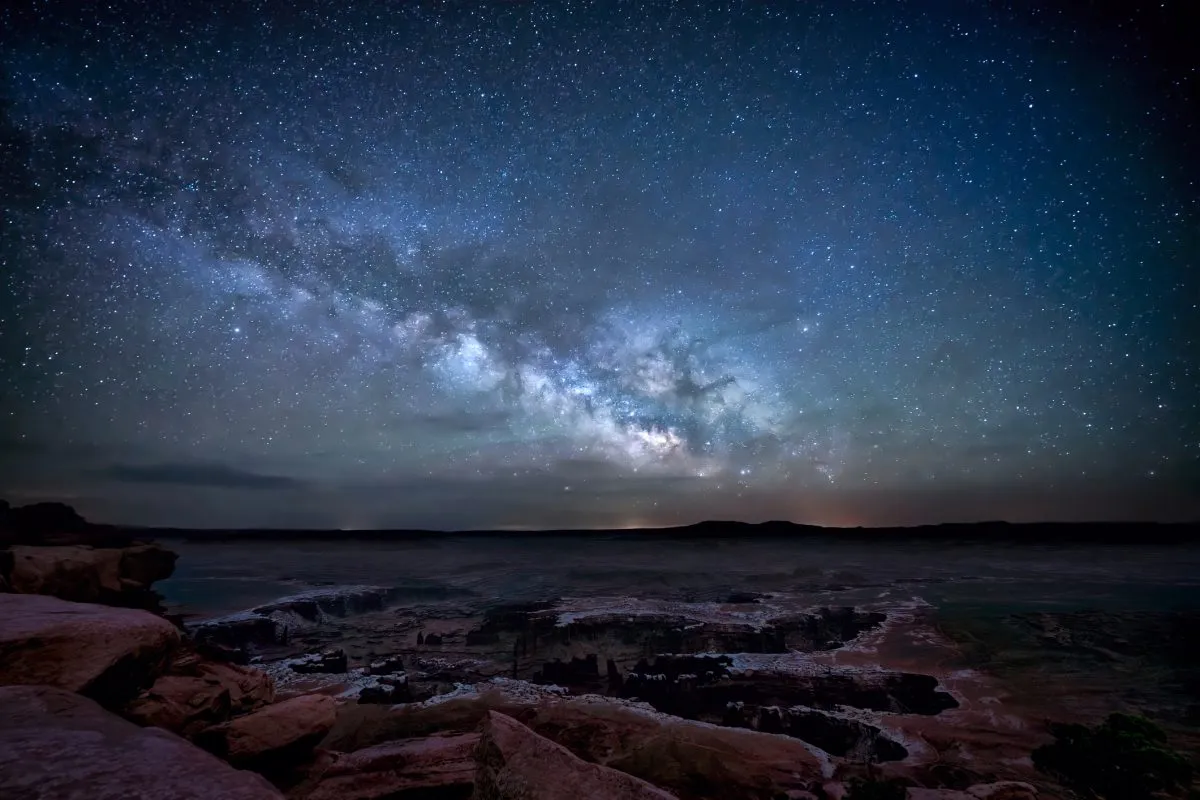
These adjacent parks have incredible views from the high plateau across deep canyons, pinnacles, cliffs and spires carved by the Green and Colorado Rivers.
Don’t miss Mesa Arch, Upheaval Dome and Grand Viewpoint Overlook in Canyonlands, and Dead Horse Point Overlook.
Bryce Canyon National Park

This small park has thousands of tall red-rock spires known as hoodoos, best seen from Inspiration Point, Sunset Point and Sunrise Point.
The visitor centre offers an astronomy programme and there’s an astronomy festival in June. The quieter Kodachrome Basin State Park is very close.
Goblin Valley State Park
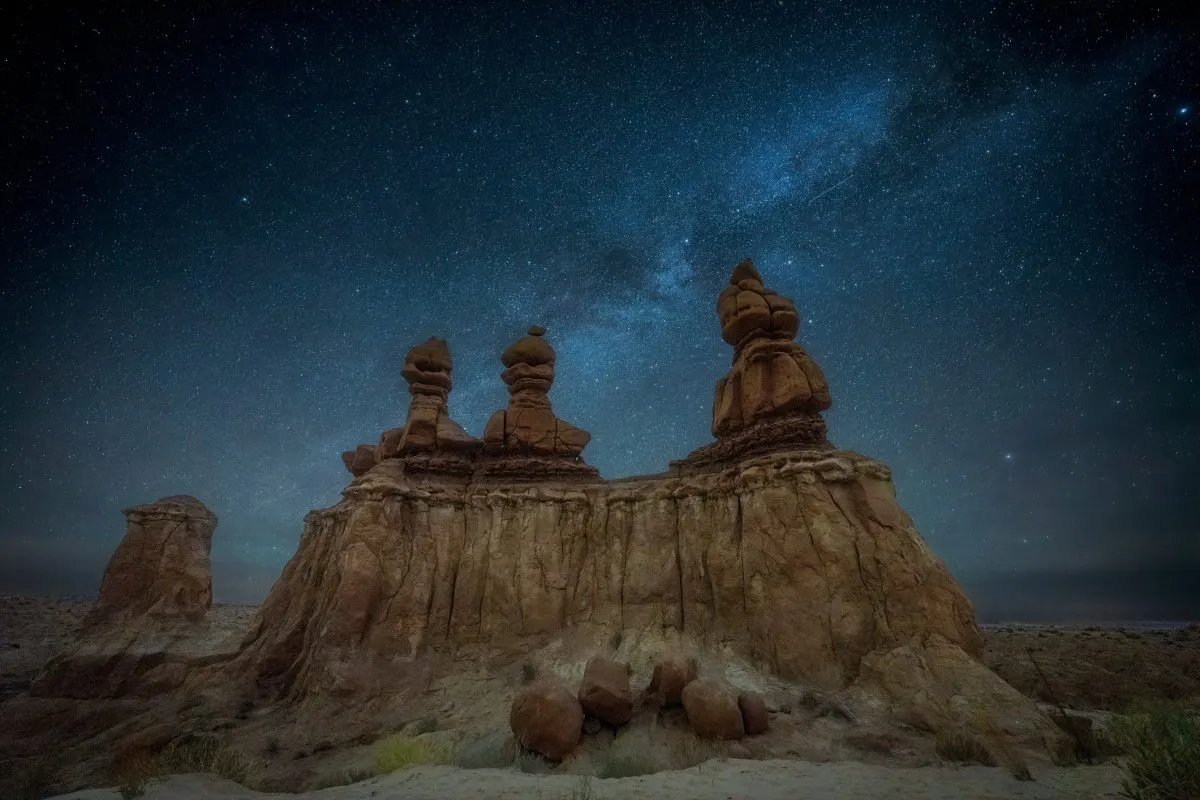
Thousands of colourful mushroom-shaped hoodoos – called goblins – make this remote park a unique place for astrophotography, due to its other-worldly feel.
Its location between Capitol Reef and Canyonlands National Park makes it a great stop on a road trip across southern Utah.
Utah dark-sky map
State Forests are coloured green; National Parks are coloured brown

- Antelope Island State Park
- Arches National Park
- Bryce Canyon National Park
- Canyonlands National Park
- Capitol Reef National Park
- Cedar Breaks National Monument
- Dead Horse Point State Park
- Dinosaur National Monument
- East Canyon State Park
- Fremont Indian State Park
- Goblin Valley State Park
- Goosenecks State Park
- Helper (town)
- Hovenweep National Monument
- Jordanelle State Park
- Kodachrome Basin State Park
- Natural Bridges National Monument
- North Fork Park
- Rainbow Bridge National Monument
- Rockport State Park
- Steinaker State Park
- Timpanogos Cave National Monument
- Torrey (town)
- Zion National Park
Astronomy under Utah's dark skies
Aside from Utah having the highest concentration of certified International Dark Sky places in the world – there are 24 spread across the state – Utah’s high elevation and resulting thin air is a major reason why it’s a dream dark-sky destination.
The state occupies a large part of the Colorado Plateau, a high desert zone that centres on the Four Corners region of the southwestern US: Utah, Colorado, Arizona and New Mexico.
"The higher you go, the clearer it’s going to be and the more you see," says Ludwig about Utah’s position above the warmest, densest part of Earth’s atmosphere.
He hands out blankets as I reach for my gloves, my hands already cold from clutching my binoculars.
The Utah desert around here gets cold at night all year, but even colder – and clearer – elsewhere in Utah.
Ludwig tells me that Bryce Canyon, one of the most popular national parks in the US, reaches 2,700 metres elevation.
Utah has some of the darkest night skies visible anywhere in the world.
The easiest places to go are, of course, the vast network of International Dark Sky Parks.
It’s Utah's national parks – Arches, Canyonlands, Bryce, Zion and Capitol Reef – that get the most attention, but don’t overlook the state parks.
Spread across the state, these tend to have better and cleaner camping facilities than their larger siblings, with the pick of the International Dark Sky Parks being Antelope Island, Dead Horse Point, Goblin Valley, Goosenecks and Kodachrome.
Utah is also one of the best places for capturing the Milky Way in North America, but it matters when you go.
The best time for astrophotography is around the new Moon, when the skies are as dark as possible, but late March to June has milder temperatures, clear skies and the Milky Way rising in the night sky.
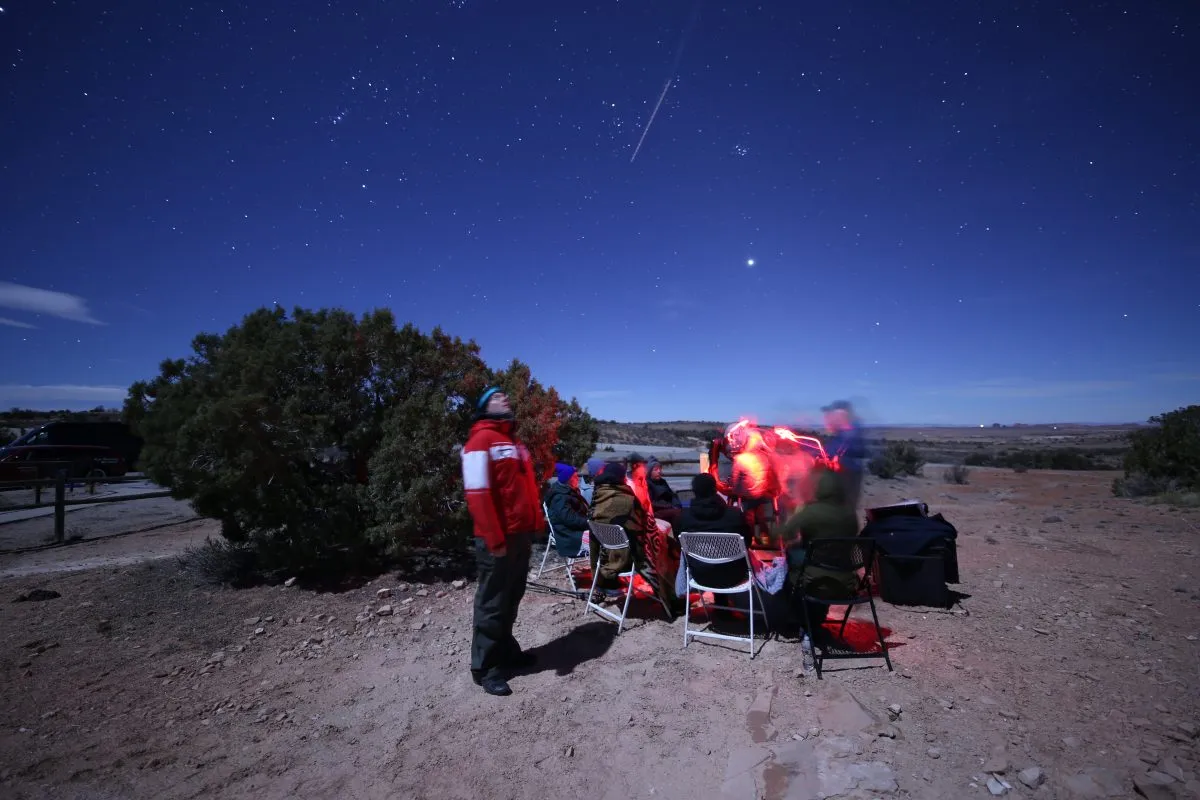
Astrophotography in Utah
Canyonlands National Park has perhaps the biggest draw of all for astrophotographers in the form of Mesa Arch, which is an easy 10-minute walk from a parking area.
"Everybody wants to get the Milky Way above it in May, or the sunrise through it," says Ryan Andreasen, a Utah-based dark-sky activist at NightSkyScience.com who volunteers for the International Dark Sky Association.
"You do get people jostling for position, but everyone can get a good shot if they work together."
He advises befriending other photographers because space is tight in front of Mesa Arch.
"Arches National Park is a paradise for astrophotographers, with endless rock formations and otherworldly landscapes," says Dan Zafra from CaptureTheAtlas.com, who organises astrophotography tours to Utah.
"Goblin Valley State Park feels like being on another planet, while Grand Staircase-Escalante National Monument and Natural Bridges are more remote and offer excellent opportunities to do astrophotography in unique locations."
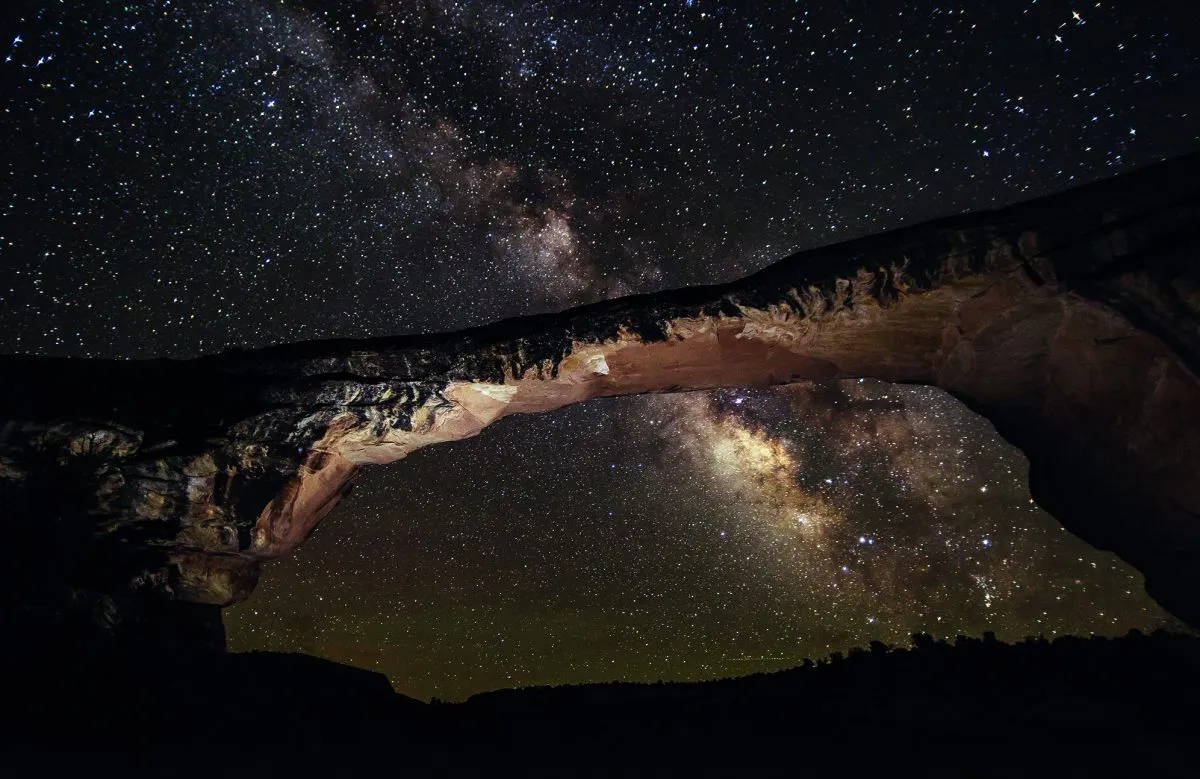
Wherever you head, always follow the regulations.
Although all national parks are accessible at night, light painting – where you illuminate the foreground with a torch during a long-exposure shot – is banned in Canyonlands and Arches, to prevent astrophotographers from ruining each other’s shots.
"I recommend planning and arriving well in advance to grab a good spot if you aim to do astrophotography," says Zafra.
If you’re after a unique astrophoto of the Milky Way above red rock formations, or you want to try some deep-sky astrophotography, then there are numerous other options in Utah.
There’s no ‘right to roam’, but 71% of the state is public lands managed by federal or state agencies.
"If you want to do your own thing, just go to the backcountry," says Ludwig.
An easy way of accessing it is to find a remote campground, which are common inside and outside of the parks.
A great option is land owned by the Bureau of Land Management (nearly 22.8 million acres in Utah, about 42 per cent of the entire state) or the Forest Service (8.2 million acres and seven national forests).
The bureau manages all lower-grade land and once you get above a certain altitude, which tends to be around a mile high, the Forest Service takes charge.
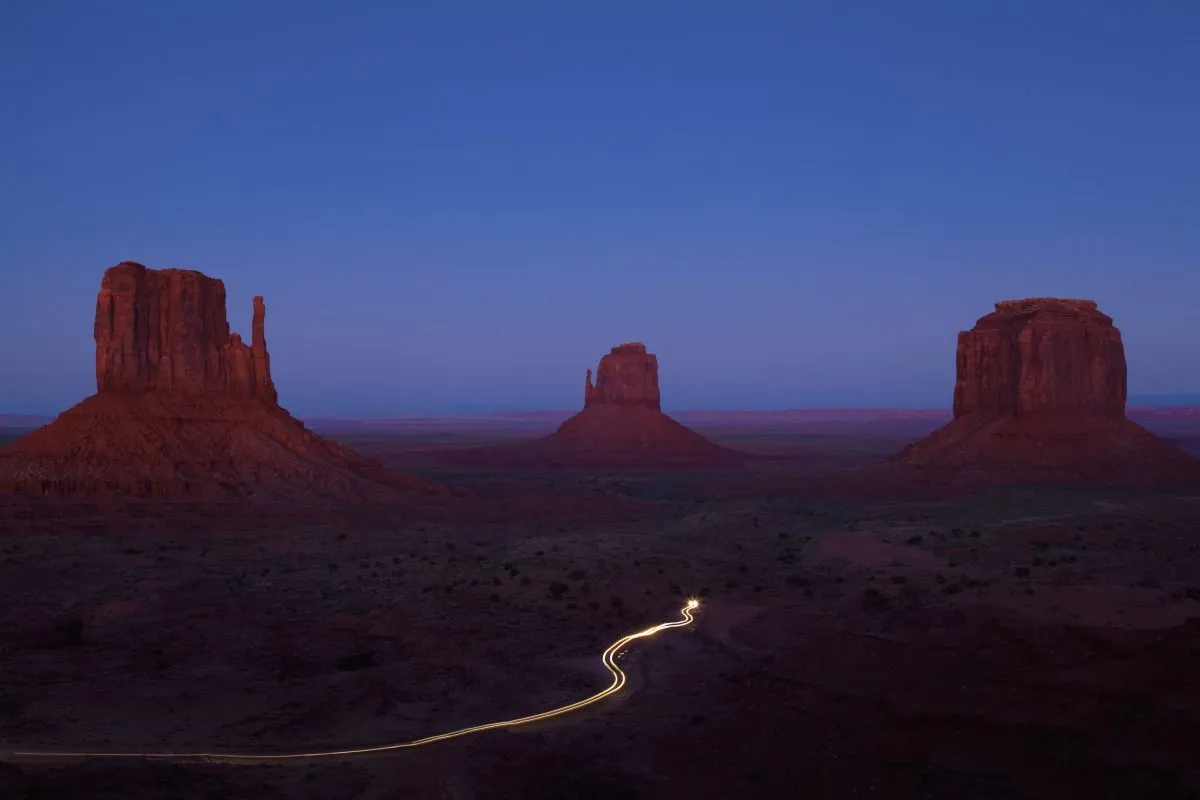
Crowd control
While Utah currently has some of the most protected dark skies and public lands in the US, its population of 3.4 million is growing, particularly along a strip of flat land to the west of the Wasatch Mountains that locals call the ‘Wasatch Front’.
"People are discovering Utah – we’ve had record-breaking population growth on that Wasatch Front in the last couple of years," says Andreasen.
"It’s why we’re working hard to see if we get some lighting controls in place before it really blows up."
Perhaps most at risk is Antelope Island State Park to the west, which overlooks the Great Salt Lake and is just an hour-and-a-half drive from Salt Lake City.
Go northeast of Salt Lake City through the mountains and you’ll find Ogden Valley, an oasis of dark stretching from North Fork Park to Huntsville, a tiny, peaceful town with few lights.
I watched a dramatic sunset between two tipis in the grounds of the Compass Rose Lodge, where we were staying, before the stars came out.
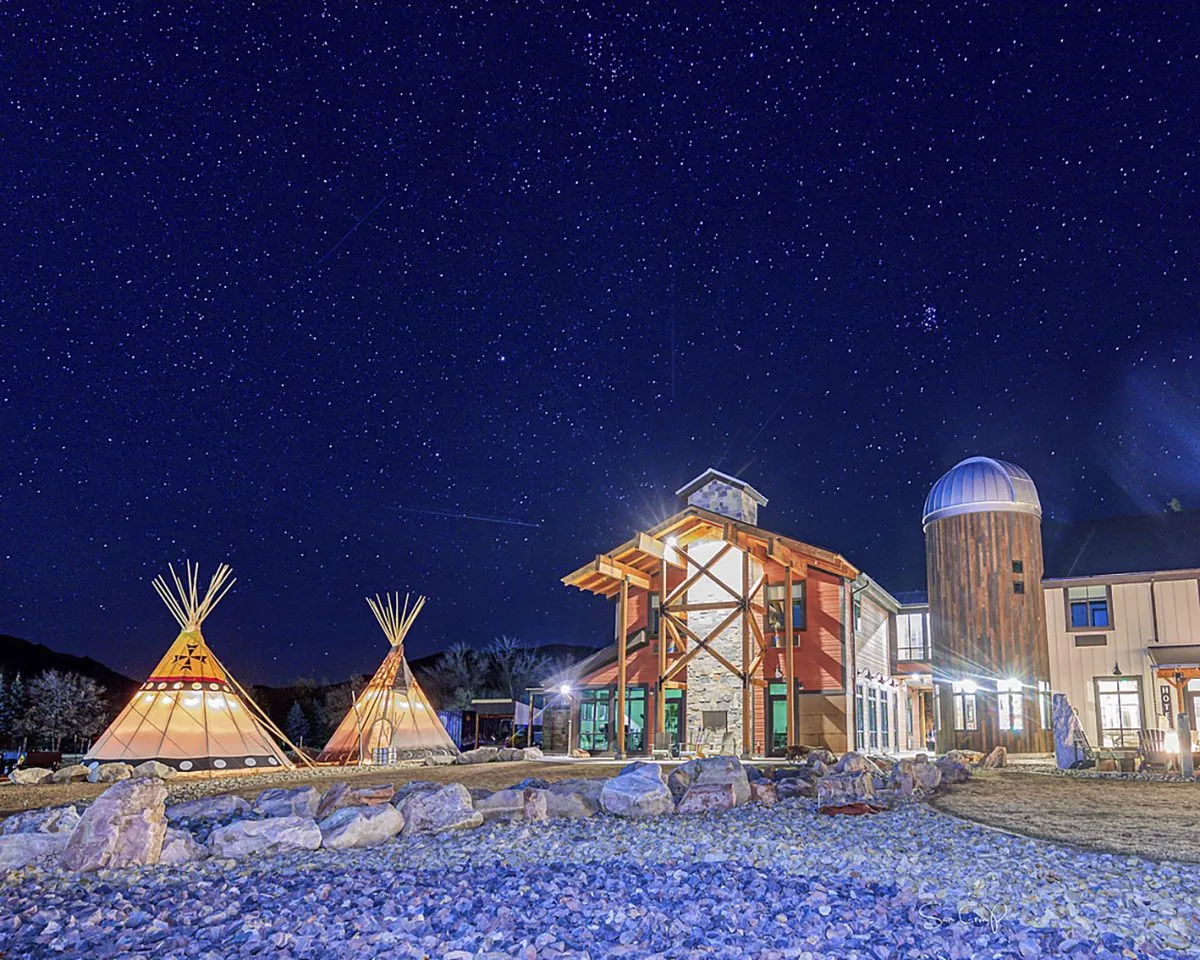
They even had their own observatory, the HALO (Huntsville Astronomic and Lunar Observatory) where guests can get a guided tour of the night sky through a 16-inch Ritchey–Chrétien telescope.
I’ve watched the Moon for decades, but never seen its craters in such stunning detail.
May is perfect for seeing the Milky Way above the red rocks, while a March trip means you can get some skiing in during the day if you wish.
If you come during the late spring, summer and early autumn, book well ahead and expect crowds, particularly in Zion, Bryce and Arches.
But if you’re after an audience with the stars, then Utah has endless possibilities.
"I do prefer to find places that nobody really goes," says Andreasen, who has worked as an astrophotographer for the Utah State Park Service.
"To be able to go into these areas and connect with the night sky without anyone else around is just phenomenal – and it excites me every time I return," he says.
Even those who live under it never get tired of the dark skies found over Utah.
Useful contacts
- Bureau of Land Management
- USDA Forest Service
- International Dark-Sky Association
- America’s Scenic Byways
- RedRock Astronomy, Moab
- Compass Rose Lodge & HALO Observatory, Huntsville
- Dark Ranger Telescope Tours, Bryce Canyon
Our trip was paid for by VisitUtah.com.
This article originally appeared in the July 2023 issue of BBC Sky at Night Magazine.

